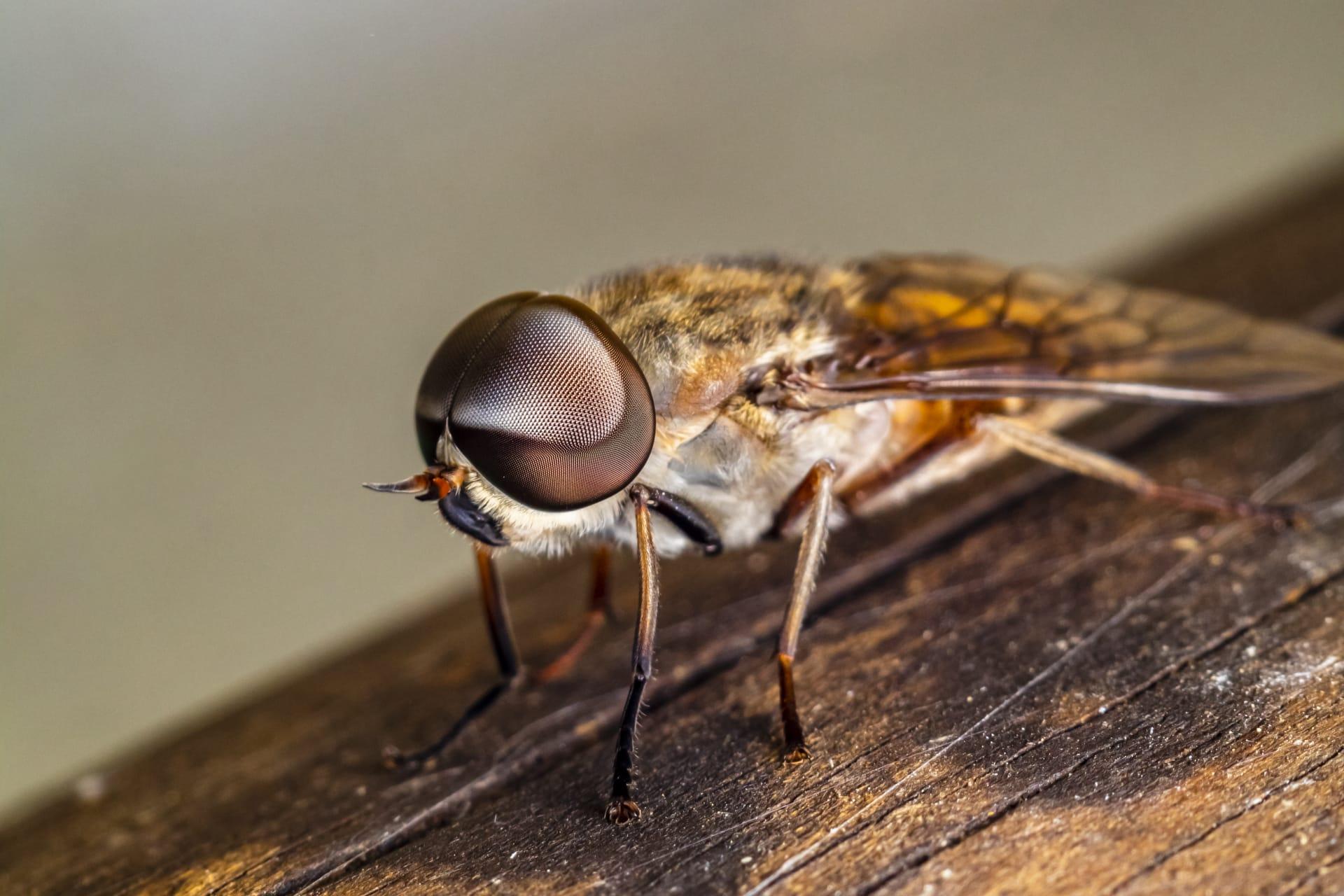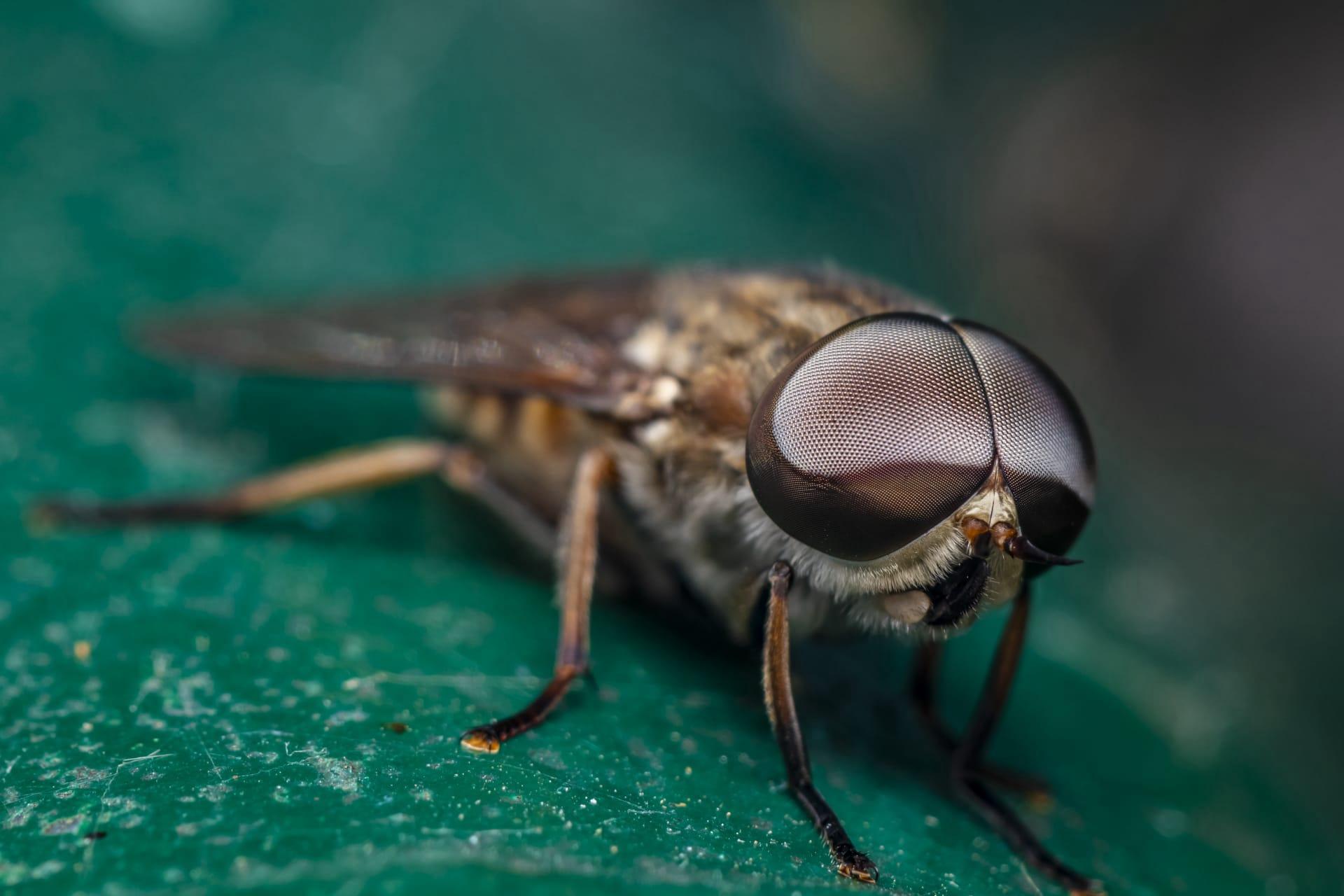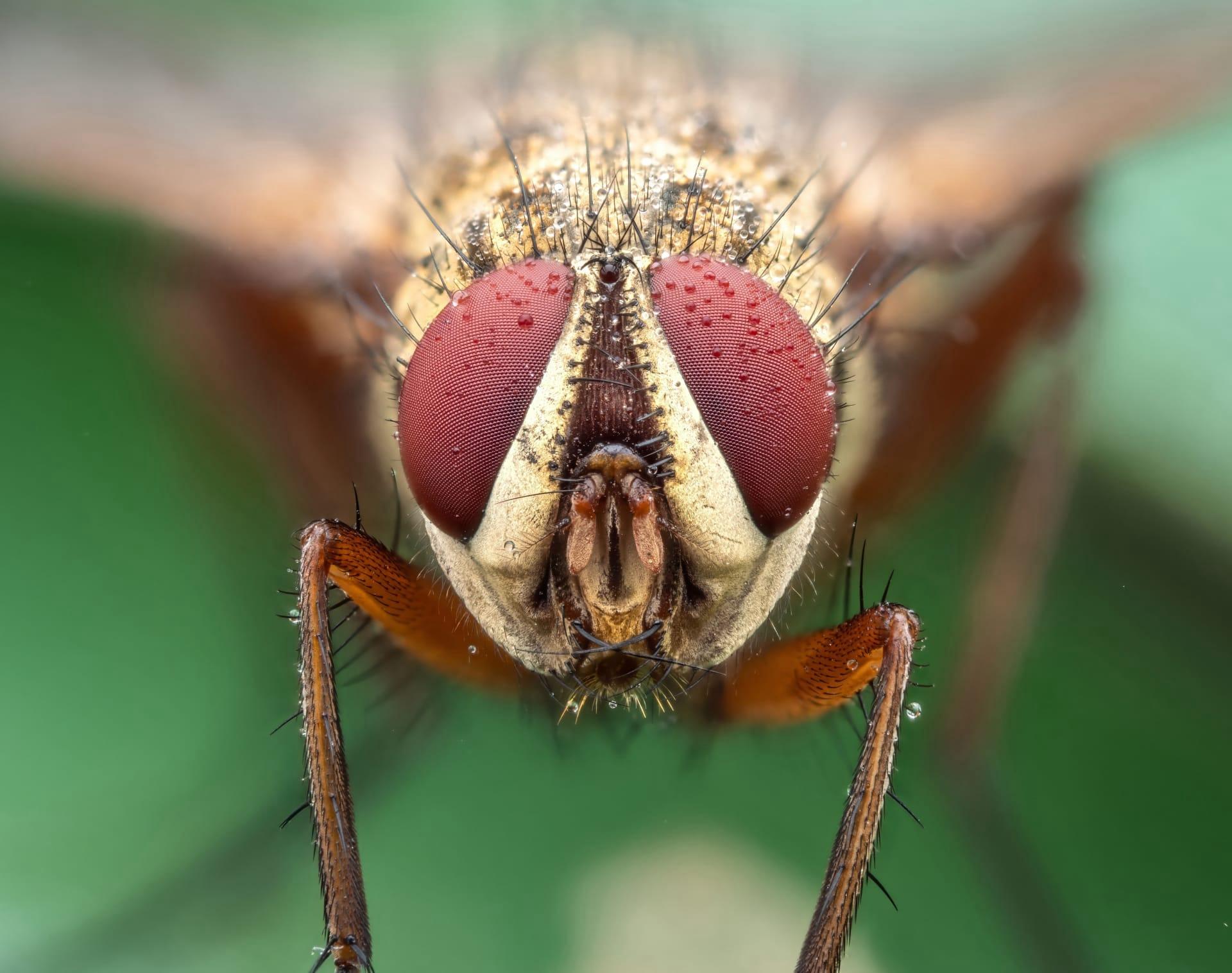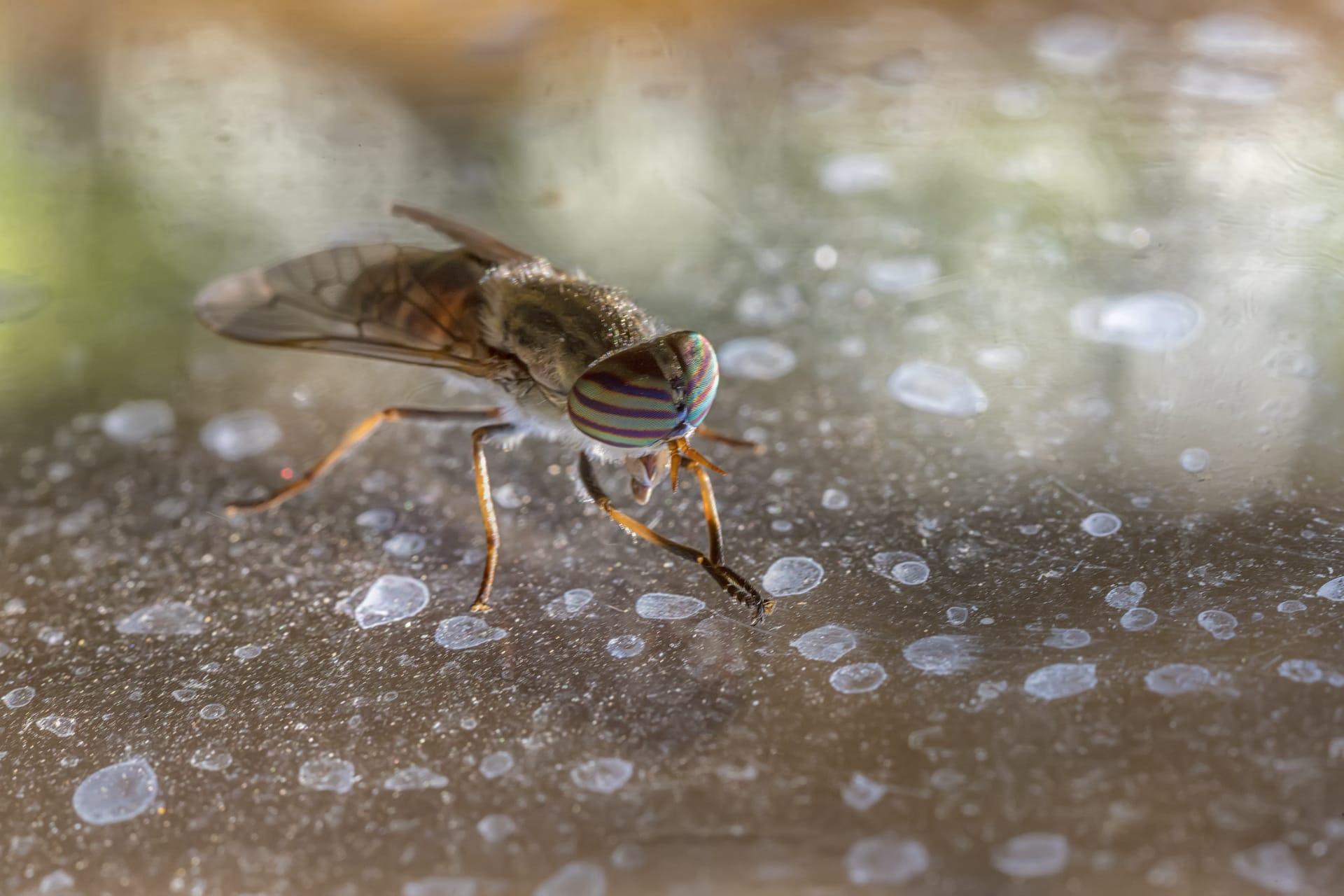Horseflies Characteristics
- Home /
- Mini Encyclopedia /
- Animal /
- Horseflies Characteristics
1
Horseflies, a common sight buzzing around horses and other large mammals, are intriguing creatures with unique physiological features. Adult horseflies typically range in size from 0.5 to 1.25 inches (1.2 to 3.2 cm) in length, with females generally being larger than males. These flies have a relatively short lifespan, surviving about 20 to 25 days in the wild. Their bodies are robust with powerful wings, and they possess large, compound eyes that are often brilliantly colored with metallic or iridescent hues, giving them excellent vision.
The most remarkable organ of horseflies is their mouthparts, designed for cutting and lapping. Unlike many other insects who suck blood, female horseflies are equipped with mandibles that can slice through the skin of their host. These mandibles are sharp and serrated, allowing the fly to effectively tear and lap up the blood of animals. This feeding mechanism is not only vital for their survival but also makes them notorious as pests, capable of causing significant discomfort to animals and humans alike. The blood meal is essential for females as it aids in the development of their eggs.

2
Question: Why do horseflies seem to be more active and aggressive in hot, sunny weather?
Answer: Horseflies are more active in hot and sunny conditions due to their dependency on warmth for energy. These flies are ectothermic, meaning they rely on external heat sources to regulate their body temperature. Sunny weather provides the ideal conditions for them to hunt and fly more efficiently. The heat also speeds up their metabolism, increasing their need for food, which in turn makes them more aggressive in seeking out hosts for blood meals. Additionally, bright sunlight enhances their vision, making it easier for them to spot potential hosts from a distance. This combination of factors explains why horseflies are particularly bothersome on sunny days.

3
Horseflies are known for their exceptional flying abilities. They can reach speeds up to 90 miles per hour, making them one of the fastest insects. This speed is not just for show; it's crucial for their survival, aiding them in escaping predators and catching prey. Their agility in the air is equally impressive, capable of quick turns and maneuvers that help them evade swatting attempts.
When it comes to feeding, horseflies exhibit a particularly interesting behavior. Females are the ones who feed on blood, which they require for egg production. They are attracted to large mammals, including humans, by carbon dioxide, body heat, and movement. Their bites are often painful due to their slicing mandibles and can cause allergic reactions in some people. Males, on the other hand, feed on nectar and do not bite. This dietary difference is a fascinating aspect of their biology, showcasing the distinct roles between the sexes.

4
Horseflies are commonly found in warm, humid environments, often near bodies of water like streams, ponds, and marshes. These areas provide the perfect breeding ground for their larvae. The larvae, known as maggots, are aquatic or semi-aquatic, thriving in wet soil or water bodies. Adult horseflies, however, can be found in a wider range of environments, including forests, meadows, and even urban areas, as long as there is a food source nearby.
The reproduction process of horseflies is quite fascinating. After mating, the female lays her eggs on vegetation near water. These eggs hatch into larvae that live in water or moist soil, where they feed on organic matter and even small invertebrates. The larval stage can last up to a year, after which they pupate and emerge as adults. This life cycle, with its aquatic larval stage, sets horseflies apart from many other flying insects and is crucial for their proliferation in suitable habitats.

5
Book: "The World of Horseflies" by Dr. Emily Stone, published in the USA in 2018. This book provides an extensive overview of horseflies, delving into their biology, behavior, and impact on the ecosystem. Dr. Stone, an entomologist, combines scientific research with captivating photographs to explore the fascinating world of these insects. The book is praised for making complex scientific concepts accessible to a general audience, offering a comprehensive guide to understanding horseflies.
Book: "Horseflies: Ecology and Control" by Prof. Alan Harris, published in the UK in 2015. Prof. Harris's book focuses on the ecological role of horseflies and methods for their control. It addresses the challenges posed by horseflies to both humans and livestock, providing insights into their life cycle and habitat. The book is a valuable resource for researchers and those involved in pest control, offering practical advice and strategies for managing horsefly populations effectively.